“Greek Apricots”, interview with director Jan Krevatin
"Greek Apricots", a seemingly incompatible pair forming a bond during a night in a gas station
Listeners:
Top listeners:
 play_arrow
play_arrow
ENGLISH Channel 01 If English is your language, or a language you understand, THIS IS YOUR CHANNEL !
 play_arrow
play_arrow
ITALIAN Channel 02 Se l’italiano è la tua lingua, o una lingua che conosci, QUESTO È IL TUO CANALE!
 play_arrow
play_arrow
EXTRA Channel 03 FRED Film Radio channel used to broadcast press conferences, seminars, workshops, master classes, etc.
 play_arrow
play_arrow
GERMAN Channel 04 Wenn Ihre Sprache Deutsch ist, oder Sie diese Sprache verstehen, dann ist das IHR KANAL !
 play_arrow
play_arrow
POLISH Channel 05
 play_arrow
play_arrow
SPANISH Channel 06 Si tu idioma es el español, o es un idioma que conoces, ¡ESTE ES TU CANAL!
 play_arrow
play_arrow
FRENCH Channel 07 Si votre langue maternelle est le français, ou si vous le comprenez, VOICI VOTRE CHAINE !
 play_arrow
play_arrow
PORTUGUESE Channel 08
 play_arrow
play_arrow
ROMANIAN Channel 09 Dacă vorbiţi sau înţelegeţi limba română, ACESTA ESTE CANALUL DUMNEAVOASTRĂ!
 play_arrow
play_arrow
SLOVENIAN Channel 10
 play_arrow
play_arrow
ENTERTAINMENT Channel 11 FRED Film Radio Channel used to broadcast music and live shows from Film Festivals.
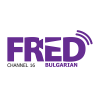 play_arrow
play_arrow
BULGARIAN Channel 16 Ако българският е вашият роден език, или го разбирате, ТОВА Е ВАШИЯТ КАНАЛ !
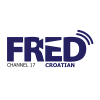 play_arrow
play_arrow
CROATIAN Channel 17 Ako je hrvatski tvoj jezik, ili ga jednostavno razumiješ, OVO JE TVOJ KANAL!
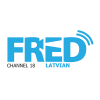 play_arrow
play_arrow
LATVIAN Channel 18
 play_arrow
play_arrow
DANISH Channel 19
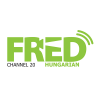 play_arrow
play_arrow
HUNGARIAN Channel 20
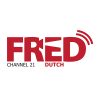 play_arrow
play_arrow
DUTCH Channel 21
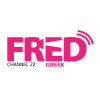 play_arrow
play_arrow
GREEK Channel 22
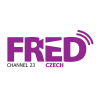 play_arrow
play_arrow
CZECH Channel 23
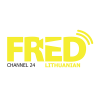 play_arrow
play_arrow
LITHUANIAN Channel 24
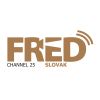 play_arrow
play_arrow
SLOVAK Channel 25
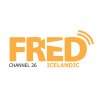 play_arrow
play_arrow
ICELANDIC Channel 26 Ef þú talar, eða skilur íslensku, er ÞETTA RÁSIN ÞÍN !
 play_arrow
play_arrow
INDUSTRY Channel 27 FRED Film Radio channel completely dedicated to industry professionals.
 play_arrow
play_arrow
EDUCATION Channel 28 FRED Film Radio channel completely dedicated to film literacy.
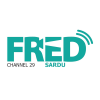 play_arrow
play_arrow
SARDU Channel 29 Si su sardu est sa limba tua, custu est su canale chi ti deghet!
 play_arrow
play_arrow
“Conversation with” at the 20th Marrakech IFF, interview with actor Willem Dafoe Bénédicte Prot
todayJuly 2, 2025
1

 play_arrow
play_arrow
"Dog and Wolf", interview with director Terézia Halamová Federica Scarpa
At the Karlovy Vary International Film Festival, director Terézia Halamová premieres her short film, “Dog and Wolf“, in the Future Frames: Generation NEXT of European Cinema section. Supported by European Film Promotion and Allwyn, the program highlights promising new voices in European filmmaking. With “Dog and Wolf“, Halamová offers more than a film — she delivers a visceral meditation on identity, silence, and the unstable boundaries between reality and performance.
“The film follows the different stages of his sleep deprivation and takes us through his chaotic life,” Halamová says of Rudo, her 25-year-old protagonist. This male stripper has abandoned sleep and stability in favor of a spiraling, nocturnal existence. But beneath the neon lights and club rhythms lies something far more fragile: a young man dissolving under the weight of his own disorientation.
Rudo’s story is told not in the language of exposition, but through image, rhythm, and absence. “Dog and Wolf” refuses to frame identity as fixed or knowable. Instead, Halamová suggests it is a mask worn in the service of others — and often, worn so long we forget what’s underneath. “Their daily routine is to change costumes and pretend, and to fulfill other people’s fantasies,” she notes. In Rudo’s world, the act of stripping becomes a metaphor for something far deeper — the emotional exposure of a man who no longer knows who he is when the lights go down.
The film’s title, “Dog and Wolf“, draws from a twilight idiom that exists in French, Slovak, and Czech — “the hour between dog and wolf”, a time when darkness distorts perception and friend becomes foe, safety turns to threat, and clarity fades into confusion. For Halamová, the metaphor is deeply personal and generational.
“It’s this stage of life for many people in their 20s when everything feels chaotic… and the search for identity gets very messy,” she explains.
“Silence… is one of the most powerful tools in cinema. It can say so much more than any dialogue,” says Halamová. In Dog and Wolf, silence becomes a weapon, a refuge, and a mirror. The film builds emotional tension not through exposition, but by contrasting scenes of chaotic movement with moments of near-absolute stillness, inviting the viewer to project their own emotional interpretation into the gaps.
Being part of Future Frames is more than a career milestone for Halamová — it’s a moment of shared visibility. “I’m 100% so honored and happy to get this platform,” she says. It’s not just about showcasing “Dog and Wolf” but about connecting with audiences and fellow filmmakers who recognize the emotional undercurrents running through her work.
Her hope for viewers? “Hopefully, they feel lighter about life,” she says. “If you leave the cinema somehow feeling lighter or seen or understood, that’s the most I could ask for.”
Anything can happen in the hour “between dog and wolf” – when the night is ending but the day has yet to begin. Director Terézia Halamová serves up a delicate, stylistically confident character study of a man who exists between the worlds of the stage, the body, and silence. Rudolf works as a stripper, but what truly shapes him is his life off the stage. Dog and Wolf is a charismatic, visually captivating film fully in tune with today’s generation trying to find its way somewhere between cigarettes, melancholy, and the yearning for more. It is a film that will seduce you not only with its story but also, and especially, with its emotions.
Written by: Federica Scarpa
Guest
Terézia HalamováFilm
Dog and WolfFestival
Karlovy Vary Film Festival"Greek Apricots", a seemingly incompatible pair forming a bond during a night in a gas station
"Skin on Skin", the passionate and unexpected love story by Simon Schneckenburger is taking part to the 8th edition of Future Frames at KVIFF
In Fish River Anthology, Veera Lamminpää blends humor, melancholy, and stop-motion animation to explore the inner lives of dead fish in a supermarket. A surreal musical elegy that questions existence, value, and the overlooked beauty of everyday life.
“January” by Jetske Lieber, selected for Future Frames at the Karlovy Vary International Film Festival, is a gentle, emotionally rich short film about heartbreak, identity, and quiet reconnections.
todayDecember 1, 2025 1
Talking with the directors of Italian film commissions like Veneto, Valle d'Aosta, and Torino Piemonte we shed some light on their work and how they are boosting regional film industries through international collaborations, funding, and storytelling.
"Untitled Home Invasion Romance" marks actor Jason Biggs' first time as a director
The Birthday Party, from Locarno to Torino Film Festival, a film about power, legacy and tyrannic love starring Willem Dafoe
The Teacher by Farah Nabulsi with Saleh Bakri, finally landing in Italy, from Torino Film Festival to cinemas.

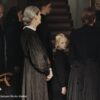



© 2023 Emerald Clear Ltd - all rights reserved.